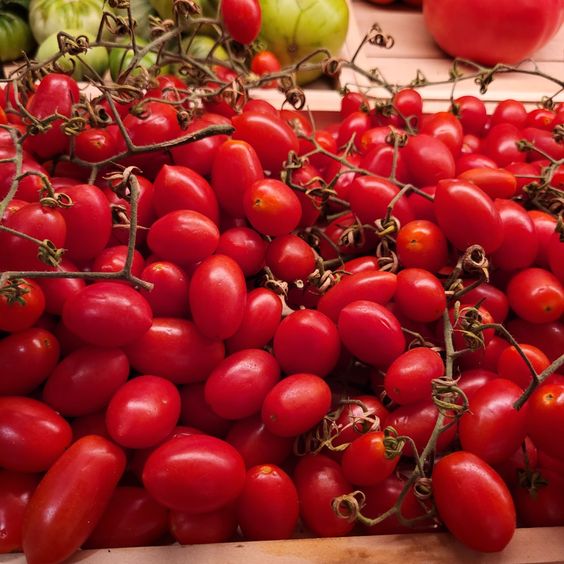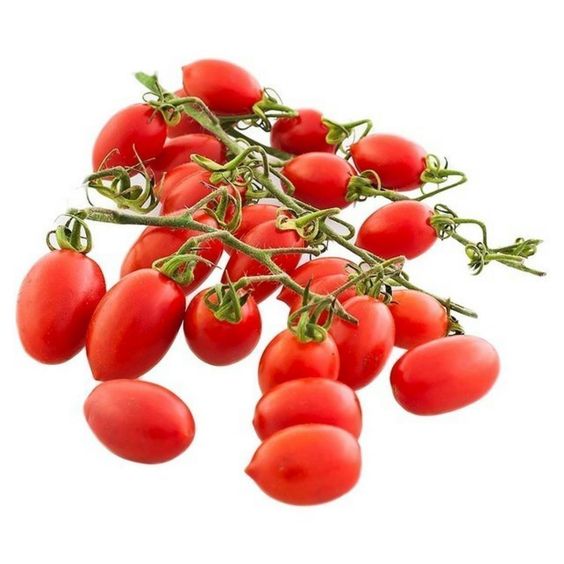
Have you ever savored the exquisite sweetness of date tomatoes? If not, you’re in for a treat. They are highly regarded in the culinary world for their delicious taste and versatility in a variety of dishes. Whether you’re a gardening enthusiast or a food lover, growing your it can be a rewarding experience. In this comprehensive guide, we will show you the art of planting and nurturing date tomatoes, helping you cultivate a bountiful harvest. Let’s embark on this journey of sowing, caring, and harvesting the luscious gems of your garden.
What Is A Date Tomato?
A date tomato (also known as a Datterini tomato) is a type of tomato, typically small and elongated in shape. Their reputation is built on their distinct flavour and robust sweetness. The name “datterini” comes from the Italian word “dattero,” which means “date,” and it refers to their shape, as they somewhat resemble small dates.
They are often used to make sauces, salads, and various tomato-based dishes due to their concentrated flavor and minimal seeds.
Why Date Tomatoes?
You might be wondering, “Why should you include them in your garden” Well, friend, here’s why:
- Sweet and Tangy: They are like the candy of the tomato world. They’re sweet with a hint of tanginess that’ll make your taste buds do the cha-cha.
- Compact and Prolific: These little guys might be small, but they sure know how to produce. You’ll find yourself with an abundance in no time.
- Easy-Peasy Maintenance: They are low-maintenance, making them ideal for novice and experienced gardeners alike.
What Are Date (Datterini) Tomatoes Used For?
Date (Datterini tomatoes), known for their sweet flavor, are used in various culinary applications, including fresh salads, tomato sauces, salsas, bruschetta, canning, roasting, sauce bases, compotes, garnishes, and even as sun-dried tomatoes. They are prized for their versatility and ability to enhance the taste of a wide range of dishes in Mediterranean and Italian cuisine.
How To Plant Date Tomatoes

When to Plant
Planting date tomatoes requires timing, as they thrive in warm conditions. The ideal time to begin your journey is in early spring, once the threat of frost has receded. This allows your plants to enjoy the full growing season and produce an abundance of succulent fruit. However, if you live in a region with a mild winter, you can consider planting them in late winter.
Timing is crucial when it comes to planting it. The optimal planting time varies based on your climate and the variety you select. Here’s what you need to consider:
1. Starting Indoors
- Begin indoor seeding 6 to 8 weeks before the last expected frost date.
- Move your young plants outside once they’ve developed a minimum of two sets of genuine leaves.
2. Direct Sowing
In regions with milder climates, you can sow date tomato seeds directly into the garden after the last frost date.
3. Protection from Wind:
- They can be delicate, so it’s a good idea to shelter them from strong winds.
Selecting a Planting Site
Sun-Kissed Bliss: Date tomatoes are sun worshipers. Select a spot that gets a minimum of 6 to 8 hours of direct sunlight daily. A sunny spot ensures robust growth and enhances the flavor of the fruit.
Well-Drained Haven: Opt for well-drained soil to prevent waterlogged roots, which they despise. Loamy soil with good drainage properties is the golden ticket.
Spacing, Depth, and Support
The Perfect Arrangement: When planting date tomatoes, allow ample space between each plant. They tend to sprawl, so spacing them 2 to 3 feet apart gives them room to flourish.
Planting Depth: Dig a hole deep enough to accommodate the root ball and plant at the same depth it was in its container. This promotes stable growth.
Sturdy Support: These plants can become top-heavy with fruit. Staking or caging your plants is advisable to prevent the bending or breaking of branches as they bear the weight of their precious cargo.
Date Tomato Plant Care
Ensuring they receive proper care is essential for a successful harvest. Let’s explore the key aspects of nurturing these delightful plants.
Light
They are sunlight enthusiasts. They crave plenty of sunshine to fuel their growth and develop the rich, sugary flavors they’re known for. Ensure they receive their daily dose of sunlight, and you’ll be rewarded with a bountiful crop.
Soil
Rich, well-draining soil is the foundation of healthy tomato plants. Prior to planting, amend your soil with compost or organic matter to enhance its fertility. Keep the soil consistently moist but not waterlogged to maintain ideal growing conditions.
Water
Watering them requires a delicate balance. They dislike soggy feet but need consistent moisture. Water deeply and regularly, keeping the soil evenly moist. Drip irrigation or a soaker hose can be handy for this purpose.
Temperature and Humidity
Date tomatoes thrive in warm temperatures. The ideal range is between 70-85°F (21-29°C). They are also partial to moderate humidity. If you live in a dry climate, consider misting the plants to increase humidity levels.
Fertilizer
Feeding is essential for their well-being. Apply a balanced, water-soluble fertilizer when they have their first set of true leaves. Adhere to the guidance provided by the manufacturer regarding the correct dilution and how often to apply the product.
Pollination
While these types of tomatoes are self-pollinating, a gentle shake or tap on the flowers can aid in the pollination process. Bees and other pollinators can also play a crucial role in ensuring a healthy fruit set.
How to Grow Date Tomatoes in Pots
When growing in pots, selecting the appropriate pot is crucial for success. Choose a pot that is at least 5 gallons in size to accommodate the plant’s growth. You can opt for materials like terracotta, plastic, wood, or resin, each with its advantages. Ensure the pot has adequate drainage, and consider options with built-in casters or place them on wheeled platforms for mobility. The right pot provides a stable and conducive environment for them to thrive in a container garden.
Pruning Date Tomatoes
They produce “suckers,” which are small shoots that emerge from the junction of the main stem and side branches. These can be pruned to maintain a single-stem structure, suitable for staked or caged plants. Alternatively, you can let some suckers grow to create a bushier, multi-stemmed plant.
Pruning tomato is a beneficial practice that involves trimming non-productive branches, diseased or damaged growth, and managing suckers.
Growing Date Tomatoes From Seed
For those who want to start from scratch, begin by:
- Planting seeds indoors should be done 6 to 8 weeks ahead of the final frost date.
- Transplant seedlings to larger pots once they have two sets of true leaves.
- Harden off the young plants before moving them outdoors.
Potting and Repotting Date Tomatoes
As it grows, it may outgrow its initial container. When this happens, carefully transplant it into a larger pot with fresh, well-draining soil. Ensure the new container has adequate drainage.
Overwintering
In regions with harsh winters, they may need protection from frost. Consider moving potted plants indoors or insulating them with frost cloth to safeguard them from cold temperatures.
Common Pests and Plant Diseases
They can fall prey to common garden pests such as aphids, whiteflies, and hornworms. Regular inspection and early intervention can help control these pests. Additionally, watch out for potential diseases like blight, blossom end rot, and wilting, and promptly address any signs of trouble.
Conclusion
Date tomatoes stand as a testament to nature’s exquisite flavors. By understanding the nuances of planting and caring for these delectable treasures, you can cultivate a thriving garden filled with nature’s candy. From selecting the perfect spot to nurturing the plants and savoring the sweet rewards of your labor, the journey of growing date tomatoes is a fulfilling one. So, why wait? Begin your date tomato adventure today and enjoy the taste of homegrown perfection.
